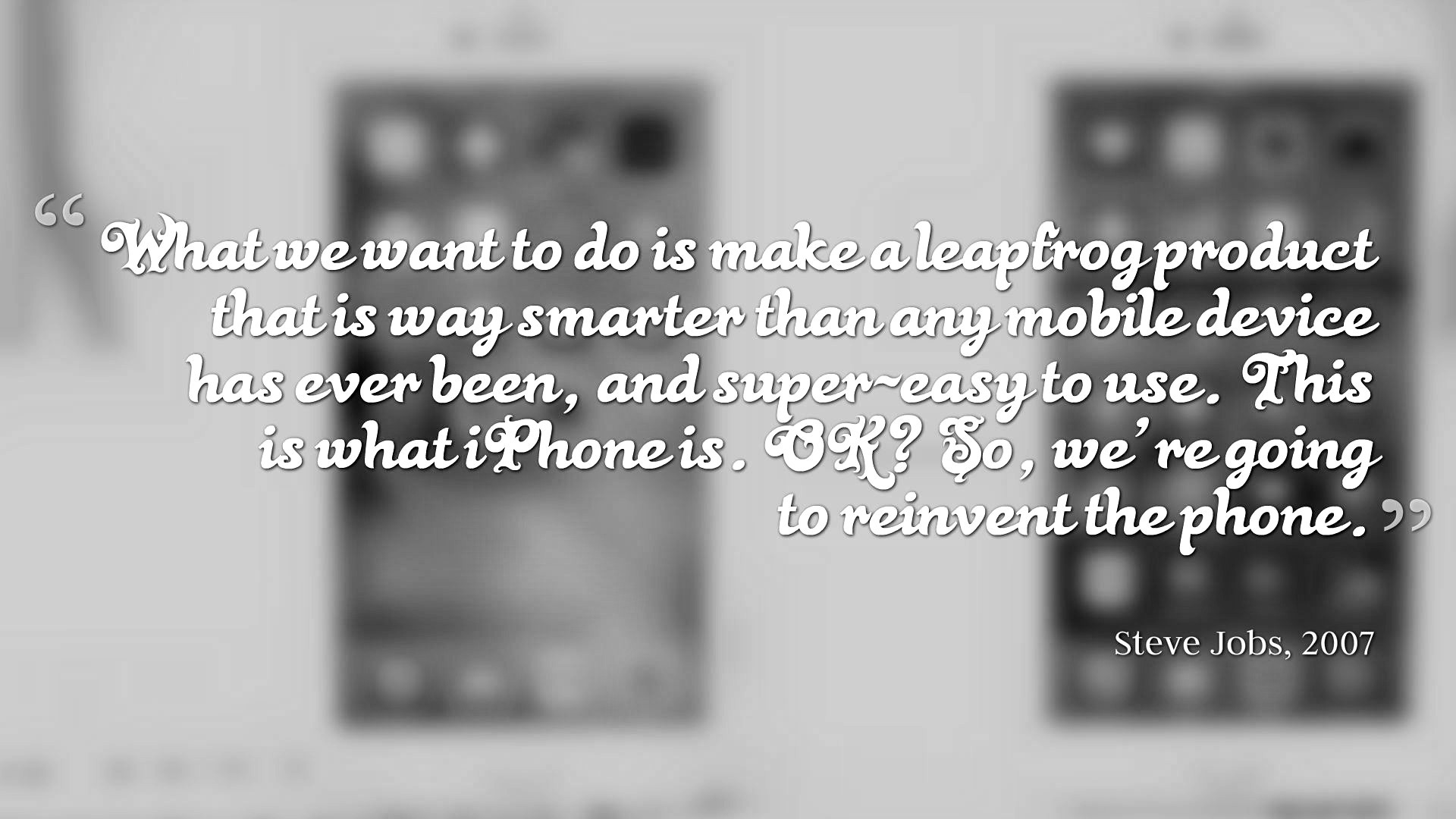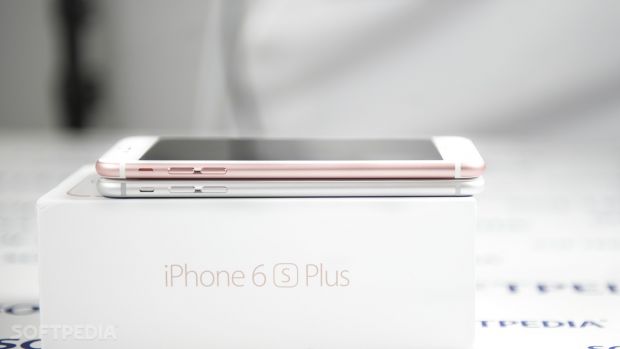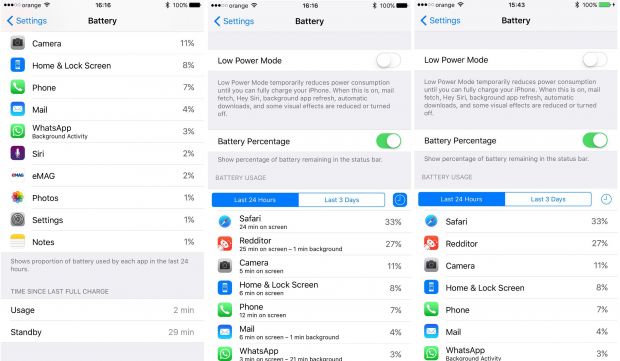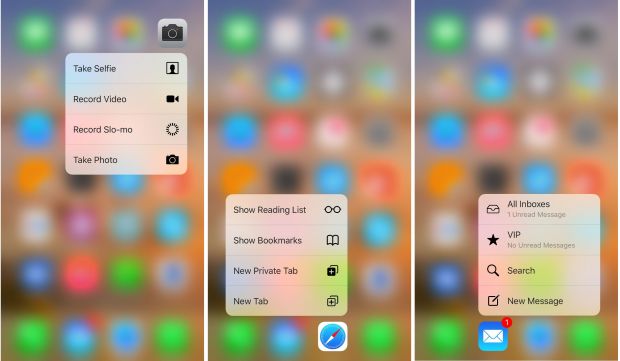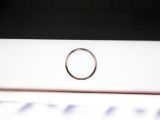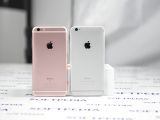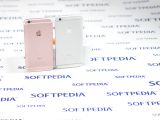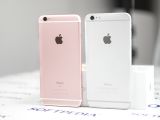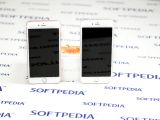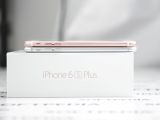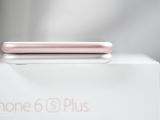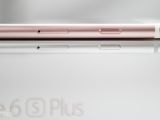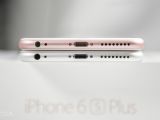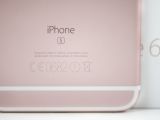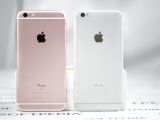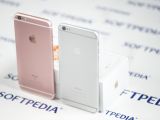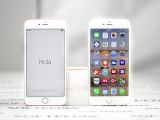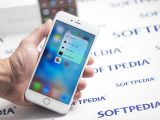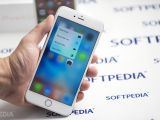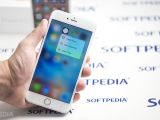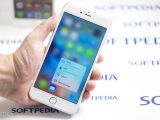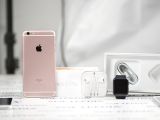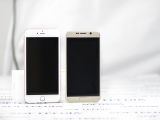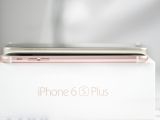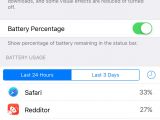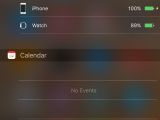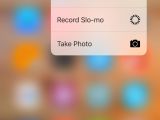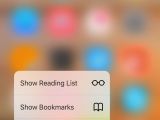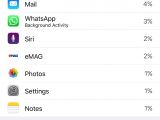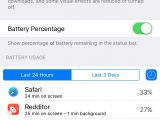| DESIGN | DISPLAY |
| POWER AND PERFORMANCE | BATTERY |
| CAMERA | 3D TOUCH |
| OTHER FEATURES | CONCLUSION |
Apple unveiled the iPhone 6s and the iPhone 6s Plus on September 9 with the same great enthusiasm it had had for all the other models or devices, trying to make the audience or those watching the live streaming see how special the new phones actually are.
With a tagline that reads, "The only thing that's changed is everything," the iPhone 6s and iPhone 6s Plus look exactly the same as their predecessors, at least at first glance, but they bring significant changes under the hood.
The first "s" model launched in 2009, when Apple took the wraps off the iPhone 4s, and was followed over the years by iPhone 5s and now iPhone 6s. The fruity-named company initially claimed that the "s" stands for speed, as all models bearing this designation were mostly improved versions of the base models, which came with better hardware and OS enhancements aimed at performance and speed.
But this doesn't necessarily mean that "s" models haven't brought anything new. The iPhone 4s was the very first iPhone to come with Siri, Apple's personal assistant that's still available today, while the iPhone 5s introduced Touch ID, a feature that so many people are using today on their devices.
So the iPhone 6s and the 6s Plus are both signs of evolution of the standard models, which are now expected to bring not only improvements in terms of speed but also new, breaking features that surely don't disappoint. Let's see how the new models actually improve the iPhone lineup.
| Specifications | iPhone 6s Plus | iPhone 6 Plus |
|---|---|---|
| Dimensions | 158.2 x 77.9 x 7.3 mm (6.23 x 3.07 x 0.29 in) | 158.1 x 77.8 x 7.1 mm (6.22 x 3.06 x 0.28 in) |
| Weight | 192 g (6.77 oz) | 172 g (6.07 oz) |
| Display | 5.5 inches (~67.7% screen-to-body ratio), LED-backlit IPS LCD, capacitive touchscreen, 16M colors, 1080 x 1920 pixels (~401 ppi pixel density), 3D Touch | 5.5 inches (~67.8% screen-to-body ratio), LED-backlit IPS LCD, capacitive touchscreen, 16M colors, 1080 x 1920 pixels (~401 ppi pixel density) |
| CPU | Apple A9, Dual-core 1.84 GHz | Apple A8, Dual-core 1.4 GHz Typhoon (ARM v8-based) |
| RAM | 2GB | 1GB |
| GPU | PowerVR GT7600 (six-core graphics) | PowerVR GX6450 (quad-core graphics) |
| Camera | Primary: 12 MP, 4032 x 3024 pixels, phase detection autofocus, dual-LED (dual tone) flash, OIS for stills and video Secondary: 5 MP, 1080p@30fps, 720p@240fps, face detection, HDR, panorama |
Primary:8 MP, 3264 x 2448 pixels, optical image stabilization, phase detection autofocus, dual-LED (dual tone) flash, OIS for stills only Secondary:1.2 MP, 720p@30fps, face detection, HDR, FaceTime over Wi-Fi or Cellular |
| Storage | 16/64/128 GB | 16/64/128 GB |
| Bluetooth | 4.2 | 4.0 |
| Wi-Fi | Wi-Fi 802.11 a/b/g/n/ac, dual-band, hotspot | Wi-Fi 802.11 a/b/g/n/ac, dual-band, hotspot |
| Battery | Non-removable Li-Po 2750 mAh battery | Non-removable Li-Po 2915 mAh battery |
| Sensors | Accelerometer, gyro, proximity, compass, barometer | Accelerometer, gyro, proximity, compass, barometer |
| Colors | Space Gray, Silver, Gold, Rose Gold | Space Gray, Silver, Gold |
| Pricing | Starting at $749 | Starting at $649 |
Design - Beauty is in the eye of the beholder
If you're expecting the new iPhone 6s Plus to look totally different when compared to its predecessor, you might be disappointed. The iPhone 6s Plus and the iPhone 6 Plus seem to be identical twins. They appear to have the same design, the same dimensions, and the same placements of key elements, such as cameras, Flash, and sensors.
Only that they're not so alike. In fact, they're quite different, but not in a way that's visible to the naked eye.
The biggest change comes to address what is generally known as bendgate. The iPhone 6 Plus used to bend in the most unexpected ways, so to prevent this from happening again on the 6s Plus, Apple turned to 7000 Series aluminum alloy for the chassis, which is supposed to make it stronger and capable of withstanding several shocks and forces that might bend it. This is actually the same material used on the Apple Watch, so the 6s Plus brings important improvements in terms of rigidity and durability.
Then, there are the exterior dimensions changes. The iPhone 6s Plus is not as thin as its predecessor (7.3 mm/0.29 inches versus 7.1 mm/0.28 inches) and is heavier (192 grams/6.77 oz versus 172 grams/6.07 oz), but there's a good reason for that. In most of the cases, the battery is the one that's adding extra weight, but as far as the iPhone 6s Plus is concerned, it's something else, because the battery is actually smaller and lighter.
And no, it's not the new super strong chassis because this one is made of aluminum, so it adds only two grams over the standard weight. The one responsible for the extra weight is the screen, which now comes with the signature 3D Touch feature, so the panel had to be redesigned to fit the same chassis as on the 6s Plus, but while it has the exact same dimensions, it's heavier than the old one.
Display - The hidden gems
The display itself doesn't bring any big changes, so you might not find anything surprising here, but Apple has hidden some gems here too.
The device comes with a 5.5-inch screen with a resolution of 1080x1920 pixels and a pixel density of 401 ppi. This is where the iPhone 6s Plus might seem inferior to the other high-end phones on the market.
A number of manufacturers have already switched to displays with bigger resolutions, but the secret behind Apple's choice is that this particular configuration allows for lower battery consumption, and this is one of the main selling points of the big iPhones. Truth is, displays with a higher resolution might offer better contrast and sharper colors, but on the other hand, they need more power, and Apple certainly doesn't want that.
To compensate for this, Apple has worked a lot on software optimization, so the result is impressive, to say the least: reduced battery consumption, excellent brightness even in direct sunlight, sharp text (also thanks to the new font), and very good colors.
Power and performance - Roadrunner
As we said in the introduction of the review, the "s" originally stood for speed, and this is certainly the case for this new model too.
The iPhone 6s Plus comes with important hardware upgrades over its predecessor, and it all starts with the new Apple 64-bit dual-core A9 Twister SoC, which runs at 1.8 GHz. The processor is paired with 2GB of RAM, a mix that, according to the Cupertino company, is 70 percent faster than the A8 used on the standard iPhone 6 Plus. At the same time, there's also a 90 percent improvement in GPU performance as compared to the previous model.
There's one important thing here that needs to be mentioned. In addition to the A9 chip, Apple also introduced the M9, which is what is being called a motion coprocessor. Its purpose is as simple as it is easy incredibly useful.
“Critics say 2GB of RAM is so yesterday. But not in Apple's world.”
This coprocessor is integrated directly into the A9 chip and is meant to keep a number of features always on, without a big impact on battery life. For example, M9 is responsible for a number of sensors, such as accelerometer, compass, gyroscope, and barometer, but also for tracking and for Siri, which must be running all the time in order to answer just when you need it.
Performance-wise, this is one of the best, if not the best hardware cocktail currently available out there, and the speed improvement is noticeable everywhere. Literally.
If you've used the iPhone 6 Plus, you're going to feel the 6s Plus faster when browsing through menus, with zero lag and smooth transition from one app to another. This performance improvement is even more obvious in apps, and Safari is living proof. The browser feels and works much faster than before, and depending on your Internet speed, it loads websites in no time.
The online experience is also greatly enhanced by the significantly improved LTE and Wi-Fi modules, which now offer up to 23 LTE bands support, 300 Mbps over LTE Advanced, and 866 Mbps on Wi-Fi.
The iPhone 6 Plus was slowed down a little bit by the arrival of iOS 9, which seemed to be less refined in terms of optimizations and performance on this particular device, and lag when working with multiple apps was part of the daily routine. But the 6s Plus fixes all these annoyances and everything seems to be running smoothly.
Battery - The paradox
The iPhone 6s Plus comes with a faster processor, double the amount of RAM of its predecessor, new features and technologies, and yet, it has a smaller battery.
As weird as this might sound, Apple packed the iPhone 6s Plus with a smaller battery, but there's a good reason for this too. In order to use the 3D Touch module and the new camera, but also to stick to the same chassis as for the iPhone 6s Plus, the fruity-named company had basically no other option than to turn to a smaller battery in order to get more room in the phone for everything.
As a result, the device ships with a non-removable 2,750 mAh battery, down from 2,915 mAh, which leads to a decrease of up to 10 percent in autonomy. And yet, these figures could vary, as Apple is using two different chips for the 6s Plus, from Samsung and from TSMC, with the latter said to offer two more hours of battery life over the former.
In order to compensate for this change, Apple introduced a so-called Low Power Mode that disables certain phone features to keep the device up and running when you are about to run out of battery.
Low Power Mode disables or reduces visual effects, background app refresh and mail synchronization, while also adjusting display brightness automatically and turning it off faster. Processor speed is also reduced by 40 percent, so you might feel the phone slower, but it should last longer than before.
There are some hidden gems here too, so if, for example, your phone is on the desk upside down, the display no longer lights up when you receive notifications. The screen is the number one battery killer on modern smartphones, so keeping it off as long as possible can help preserve battery life.
The iPhone 6 Plus could go for as much as two full days with moderate usage, but the iPhone 6s Plus drops to about one day and a half, or even one day if you're a heavy user. A drop in terms of battery life is clearly noticeable on the 6s Plus, and while this might be disappointing for some, it's still one of the best autonomy you can get from a modern smartphone.
As mentioned, the device comes with improved LTE and WiFi, and it turns out that the biggest battery drop is experienced when browsing the web on 3G/4G. Whereas the original iPhone Plus dropped to about 70 percent on moderate use after one day, the 6s Plus goes as low as 50 percent because of all of the above.
Camera - Hard to impress
The iPhone 6s Plus is the first in four generation that finally brings an upgraded sensor from 8MP to 12MP for the back unit, which is clearly a welcome change for those who want to take photos all day long with their devices.
Naturally, thanks to this upgrade and the post-processing that Apple has become famous for, most buyers expect stunning pictures, at least when compared to those shot with the iPhone 6 Plus. But does this really happen? Yes and no.
First and foremost, the 12-megapixel sensor brings an improvement in terms of resolution (4032x3024 px versus 3264x2448 px), but as far as the photo quality is concerned, the result is far from impressive.
First off, let's see the specs. The camera boasts a dual-LED Flash, HDR support, as well as optical image stabilization, as compared to the standard 6s iPhone, which only features digital image stabilization. The camera lens is made of five elements and uses an f/2.2 aperture plus a sapphire lens cover.
For the iPhone 6s Plus, Apple seems to just rely too much on post-processing, pretty much because it has the resources to do it, which in many cases provides stunning results but fails to impress at random times. For example, we've noticed that, while colors are more vivid than before and the contrast has been improved too, it's not really hard to overexpose a photo. The software optimization that Apple has implemented automatically controls exposure, but it doesn't work correctly every single time, as you'd expect it to do. HDR is being used much more often than before and this significantly improves photo quality.
And yet, Apple's focus on software optimizations for the camera pays off where others don't. Noise is almost impossible to notice, and in low-light conditions, the iPhone 6s Plus performs even better than its predecessor, although at some given moments, we've also spotted less intense colors that are mainly produced by the filters, which are automatically applied to remove noise. So shooting the same photo the second time could actually be a good idea.
Overall, the camera performs very well, but it's not really the stunning upgrade that you'd expect it to be. It does bring improvements, but as compared to the one on the iPhone 6 Plus, it's not really such an outstanding change.
iPhone 6 Plus vs. iPhone 6s Plus in-depth comparison photo. The latter allows for increased zoom level and offers slightly sharper edges and better contrast.In addition to the classic photos, the iPhone 6s Plus can also record 4K video, which is a first for Apple's phone lineup. The 4K videos are shot at 30 FPS and aren't exactly outstanding in terms of quality, but they certainly look good. And yet, if you do want to record a good-looking video, it's better to go for 1080p, which shoots at 30 and 60 FPS, as it not only has more vivid colors and better contrast but also takes less space on the device. And given the fact that many actually buy the 16GB model, storage space could certainly be an issue.
A standard 1080p video with the default settings on the iPhone 6s Plus. 4K video shot with the iPhone 6s Plus. Notice the improved colors and contrast, but it's important to note that such a video has almost double the size of a regular one. A one-minute clip, for example, takes around 350 MB. Make sure you select the 4K video resolution when watching.Apple's big innovation in the camera business is represented by the so-called Live Photos mode, which some people might already be familiar with, as it's currently available on rival platforms, such as Microsoft's Windows Phone.
What it does is add 1.5 seconds of video at both the beginning and the end of a photo, so eventually, you get a 3-second animation that also uses sound (Microsoft's version doesn't come with sound though) instead of a still photo.
The live photo has a resolution of 1440x1080px and is shot at 14 FPS, which provides a rather smooth transition from one frame to another during those 3 seconds. But live photos also have their own setbacks. First, they take more space on the device than still photos do (up to 4.5 MB, which once again, in the case of the 16 GB iPhone, might be a problem), and currently work on OS X El Capitan only, so you aren't able to view them on Windows, for instance.
If you're a fan of selfies, the 5MP front camera comes not only with auto HDR and 1080p video support but also with a new "innovation" that turns the phone display into flash. Apple says that most people who take selfies bring the phone very close to their faces, so lighting up the screen when taking a photo with the front camera helps improve the quality of the picture.
3D Touch - Revolution and evolution
This is clearly the number one feature addition to the iPhone 6s Plus. As mentioned at the beginning of our review, every "s" iPhone came with improvements in speed, but each also brought a new breaking feature that set them apart from the others.
In the case of the iPhone 6s Plus, it's 3D Touch, a feature that's borrowed from the Apple Watch and provides a new way to interact with your apps.
In short, it's a new technology that determines how much pressure you apply with the touch on the display, and depending on this, it provides you with different options. To make it possible, Apple turned to capacitive sensors that are directly integrated into the backlight of the display, and using information provided by the accelerometer and the touch sensor, iOS processes every tap to determine the operations that should be displayed.
Built-in Taptic Engine vibrates when 3D Touch comes into play and corresponds to the level of pressure you apply on the screen, so the harder you press, the more intense the vibration.
3D Touch is undoubtedly a breaking change in the iPhone lineup, but for moment, it still lacks support for apps available in the store. Apple made the first step towards a wider adoption of 3D Touch by adding support in its own apps, so for example, when pressing the Mail icon harder, you get options such as all inboxes, VIP, search, and message, while doing the same thing on the camera icon lets you take a selfie, record video or slow-motion, or shoot a photo instantly.
This new feature can be considered some sort of right-click on the iPhone, as it allows you to perform a number of actions faster than before. But depending on the app, it can offer different tools. In Safari, for instance, pressing firmly on a URL shows a preview of the page, while doing this on the keyboard when typing a message makes it look and work like a trackpad in order to select text and move the cursor faster and more easily.
3D Touch options are available all over iOS, and Apple is expected to improve support for this feature in the upcoming updates for its operating system.
Other features - Just don't miss these
Apple ships the iPhone 6s Plus with iOS 9, the new version of the operating system that brings a number of improvements and optimizations supposed to help boost battery life, but also to increase performance on all supported devices.
While everything about it can be found in our iOS 9 review, it's worth mentioning that it also brings iPhone 6s Plus-specific improvements developed to help you make the most of the features coming on this device. The best example is 3D Touch, which is only supported in iOS 9 and allows you to perform certain tasks by pressing firmly on an icon.
What's more, it also lays the foundation for the significantly improved Touch ID sensor that lets you unlock the phone and make purchases with Apple Pay using your fingerprint. Apple significantly improved fingerprint recognition on the iPhone 6s Plus, so it's really blazing fast this time.
“iOS9 works well, but it still needs improvements here and there.”
It's so fast that it's actually annoying because, sometimes, if you want to read notifications on the lock screen, it unlocks before you can see anything. So to do this, you have to press the home button with a different finger than the one registered for Touch ID, so you get a "Try again" error but are able to read the notifications.
But in addition to this, iOS 9 also comes with a new font called San Francisco, which significantly improves readability and looks great on the iPhone 6s Plus.
There are some problems though that seem to be caused by the OS itself. At random times, there's a small lag affecting emails, despite using an Exchange server. We've also experienced the same problem on the iPhone 6 Plus with iOS 9, so it's definitely a software issue. What's more, every once in a while the Mail badge showing the number of unread mail stays on despite reading all messages and the only way to fix this seem to be a quick mail account enable-disable toggle.
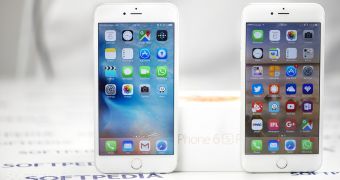
 14 DAY TRIAL //
14 DAY TRIAL // 